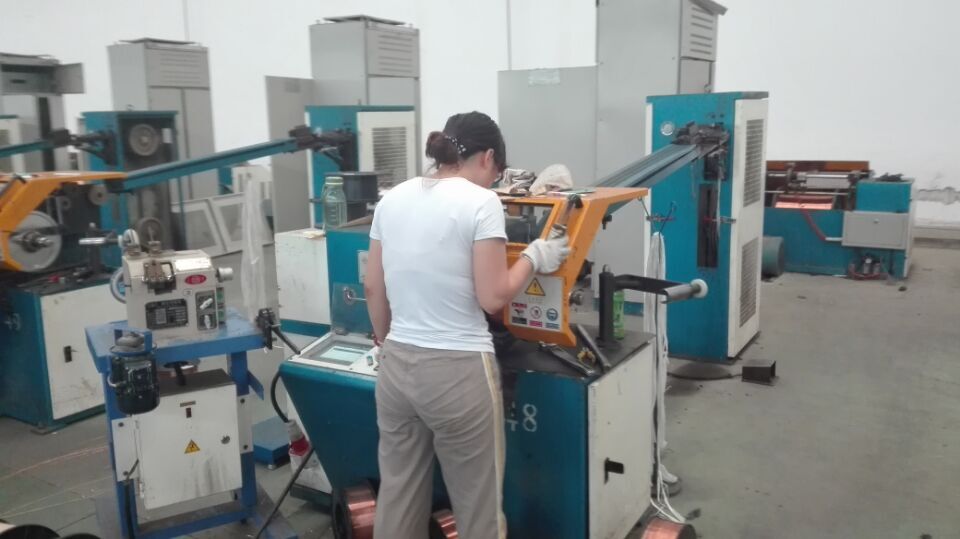Wire Rods Specifically Designed for Manufacturing High-Quality Welding Electrodes and Applications
Understanding Wire Rod for Welding Electrodes
Welding is an indispensable process across various industries, and its efficiency heavily relies on the quality of the materials used. One of the critical components in the welding process is the welding electrode, which serves as a conduit for filler metal and is vital for maintaining the integrity of the weld. Wire rods for welding electrodes play a vital role in this manufacturing process; they are fundamental in ensuring strong, durable, and effective welds.
What is Wire Rod?
Wire rod refers to a semi-finished steel product that is produced through a series of rolling processes. It is typically made from high-quality steel, which may undergo further processes to enhance its properties, making it suitable for various applications, including welding. The wire rod is delivered in coils and can be drawn into finer wires, which are essential for fabricating welding electrodes.
Types of Wire Rod for Welding Electrodes
There are several types of wire rods designed for specific welding applications. The most common types include low carbon wire rods, high carbon wire rods, and alloyed wire rods.
1. Low Carbon Wire Rods These rods are primarily used for manufacturing mild steel electrodes. They are known for their ductility and excellent welding properties. Low carbon rods are ideal for applications where lower strength is sufficient, such as in construction and automotive industries.
2. High Carbon Wire Rods These rods are used in applications requiring higher tensile strength. They are commonly employed in high-strength steel welding electrodes, which are suitable for heavy machinery and structural applications.
3. Alloyed Wire Rods These rods contain a combination of different alloying elements, enhancing specific properties such as corrosion resistance, heat resistance, and toughness. Such rods are often used in specialized welding applications, including those in the oil and gas sectors and in the manufacturing of chemical processing equipment.
Manufacturing Process of Welding Electrodes from Wire Rods
wire rod for welding electrodes

The production of welding electrodes from wire rods involves several stages. First, the wire rods are drawn down to specific diameters. The drawing process requires precision to ensure that the resulting wire has consistent diameter and mechanical properties throughout.
Following this, the wire is subjected to surface treatment processes to remove any impurities such as scales or rust. This ensures better adhesion of the coating material, which is essential for effective welding performance.
Next, the wire is coated with a flux material. The flux serves several purposes it protects the molten weld pool from atmospheric contamination, enhances the properties of the weld, and helps stabilize the arc during welding. The coating process can vary depending on the intended application; some electrodes may require specific compositions to perform effectively in challenging environments.
Finally, the coated electrodes are cut to desired lengths and packaged for distribution. Quality control is paramount in this process to ensure that the electrodes meet industry standards and customer specifications.
Applications of Welding Electrodes
Welding electrodes manufactured from wire rods are used extensively across various sectors. In construction, they are vital for joining steel structures, ensuring safety and integrity in buildings and bridges. In the automotive industry, these electrodes are used for fabricating body panels and components, contributing to both the strength and safety of vehicles.
Moreover, the oil and gas industry relies heavily on high-performance welding electrodes for pipelines and offshore structures, where durability and resistance to harsh environmental conditions are paramount.
Conclusion
Wire rods for welding electrodes are crucial materials that significantly influence the quality of welds across numerous industries. Understanding the types, manufacturing processes, and applications of these wire rods can provide insights into their importance in ensuring efficient and effective welding processes. Quality wire rods not only improve welding outcomes but also play a critical role in enhancing the sustainability and longevity of constructed assets. As industries continue to evolve, the demand for high-quality welding electrodes produced from superior wire rods will remain at the forefront of manufacturing advancements.
-
Best MIG Welding No Gas Flux Core Solution – Easy, Portable & Clean WeldingNewsJul.08,2025
-
7018 Welding Rod 3/16 - High Strength, Low Hydrogen Electrodes Wholesale 3/32 Welding Rod 7018 Suppliers & China 7018 AC Welding Rod FactoryNewsJul.08,2025
-
High Quality MIG Aluminium Welding Wire - Wholesale Factory Prices from China SuppliersNewsJul.07,2025
-
High-Quality Gasless Aluminum Welding Wire China Gasless Aluminum MIG Wire SupplierNewsJul.07,2025
-
High Quality Ordinary Welding Rod for Pipes – Reliable China Welding Rod 7016 SupplierNewsJul.06,2025
-
Welding Wire 0.9 mm ER70S-6 Supplier Wholesale Manufacturers & FactoriesNewsJul.06,2025


